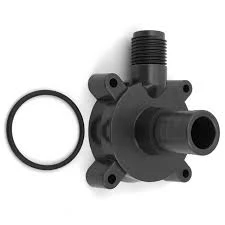Mobile:+86-311-808-126-83
Email:info@ydcastings.com
Innovations and Applications of Cast Steel in Modern Engineering Solutions
The Evolution and Advantages of Cast Steel
Cast steel, a material that has gained significant traction in various industries, is a versatile and robust alloy formed from molten metal. The process of casting steel has undergone substantial evolution over the years, allowing for the production of high-quality components that meet the rigorous demands of modern engineering applications. This article explores the development, properties, and advantages of cast steel, highlighting its importance in contemporary manufacturing.
The History of Cast Steel
The history of cast steel can be traced back to ancient civilizations, where primitive forms of steel were produced. However, the casting methods were rudimentary and often led to inconsistency in material properties. The true evolution of cast steel began during the Industrial Revolution in the 18th and 19th centuries, with significant advancements in metallurgy and manufacturing processes.
The introduction of alloying elements such as chromium, nickel, and molybdenum marked a turning point in the production of cast steel. These elements improved the mechanical properties of steel, enhancing its strength, ductility, and resistance to wear and corrosion. The development of high-temperature and pressure casting techniques further allowed for the production of large and complex components, expanding the applications of cast steel across various industries, including automotive, aerospace, and construction.
Properties of Cast Steel
Cast steel is characterized by its unique properties, which make it suitable for a wide range of applications. Some of the notable properties include
1. Strength and Durability Cast steel exhibits high tensile strength and durability, making it an ideal choice for load-bearing components. Its ability to withstand heavy loads without deformation ensures longevity in demanding applications.
3. Corrosion Resistance Certain alloying elements in cast steel enhance its resistance to corrosion, making it suitable for environments prone to moisture and chemicals.
cast steel

4. Machinability Cast steel can be easily machined to precise specifications, facilitating the production of intricate components and parts that meet strict tolerances.
5. Weldability Cast steel can be welded effectively, allowing for easy repair and modification. This property is particularly valuable in industries where maintenance is crucial.
Advantages of Cast Steel
The advantages of using cast steel are numerous and significant, especially when compared to other materials. Some of the key benefits include
1. Cost-Effectiveness While the initial cost of casting may be higher than some other manufacturing methods, the long-term savings associated with durability and reduced maintenance can make cast steel an economically viable choice.
2. Versatility The ability to cast complex shapes and sizes provides designers with the flexibility to engineer components according to specific requirements. This versatility is invaluable in sectors where customization is essential.
3. Improved Performance Components made from cast steel often outperform those made from alternative materials. For instance, in the automotive industry, cast steel parts contribute to improved vehicle performance and safety features.
4. Sustainability The recycling of scrap steel and the inherent recyclability of cast steel components contribute to sustainable manufacturing practices. Using recycled materials reduces the environmental impact and aligns with global efforts toward sustainability.
Conclusion
As industries continue to evolve and demand more robust materials, cast steel stands out as a key player in the field of engineering and manufacturing. Its rich history, combined with its superior properties and advantages, makes it an indispensable material for a wide array of applications. The ongoing advancements in casting technologies promise even greater innovations in the future, ensuring that cast steel will remain a cornerstone of modern manufacturing practices. As we look forward, the combination of science, technology, and creativity will undoubtedly lead to new horizons for cast steel, further solidifying its role in shaping the infrastructures of tomorrow.
-
Why Should You Invest in Superior Pump Castings for Your Equipment?NewsJun.09,2025
-
Unlock Performance Potential with Stainless Impellers and Aluminum End CapsNewsJun.09,2025
-
Revolutionize Your Machinery with Superior Cast Iron and Aluminum ComponentsNewsJun.09,2025
-
Revolutionize Fluid Dynamics with Premium Pump ComponentsNewsJun.09,2025
-
Optimizing Industrial Systems with Essential Valve ComponentsNewsJun.09,2025
-
Elevate Grid Efficiency with High-Precision Power CastingsNewsJun.09,2025











